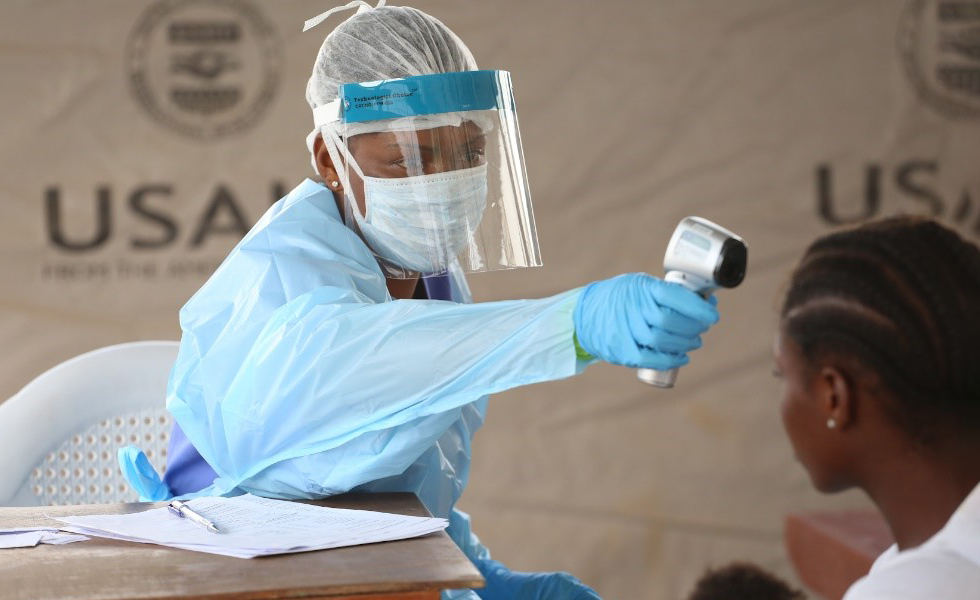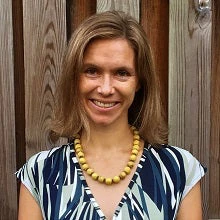
On March 31st and April 1st, the World Bank’s Development Impact Evaluation (DIME) Department and Tools and Analytics Unit hosted Measuring Development: Emerging Data and Methods in Global Health Research (MeasureDev 2021), in partnership with the Center for Effective Global Action. The conference showcased how researchers are using new types of data and data-intensive approaches to address critical public health challenges, especially in low- and middle-income countries. It highlighted ways that new analytical methods (such as applications of artificial intelligence), and growing troves of new data (produced by social media platforms, internet searches, sensors, and cell phones) are allowing researchers to track, measure, and respond to health interventions and phenomena in real-time, and at lower cost than traditional person-to-person survey methods. This is particularly helpful in a crisis situation like the COVID-19 pandemic, where traditional data collection is infeasible and real-time insights are required for public policy responses.
Here, we share highlights of the innovative research presented at MeasureDev 2021 and its implications for policymakers around the world. A number of excellent talks are not featured here due to space constraints. Please visit our website for a complete list of speakers with links to presentation videos.
MeasureDev 2021 Research Roundup
AI and Health
In the keynote, Ziad Obermeyer, CEGA affiliated faculty and professor at the University of California, Berkeley, discussed the uses of predictive algorithms in health, and the ways bias seeps in. Obermeyer highlighted his research showing how black patients assigned the same level of health risk by an algorithm are actually sicker than white patients. He further showed how the CARES act introduced bias in COVID-19 relief funding. Targeting based on patients who use lots of resources (revenues) rather than patients who need lots of resources (COVID-19 severity) disproportionately disadvantaged black counties. Despite serious problems, he explained that ML/algorithmic approaches remain critical cost-efficient tools for informing public policy, and charted a path for weeding out bias in algorithmic targeting (video).
Tracking and Responding to COVID-19
Presentations in this session highlighted the rich, non-traditional data sources researchers have leveraged to inform COVID responses, including: internet data (more than half the world population is counted as active-internet users), cell phone data (cell phones now outnumber people), social media use, geospatial and remotely sensed data. We also saw new research around COVID testing, including a timely presentation on high-frequency pooled testing.
- Robert Marty (DIME) showed that increases in COVID-related google searches were predictive of surges in caseloads at the national and subnational levels, suggesting policy-makers could look to google search data for early indicators of COVID-19 spikes (video).
- Frauke Kreuter (University of Maryland) discussed a collaboration with Facebook to design and roll out a survey tool for assessing COVID-19 symptoms, social behaviors, mental health, economic security, vaccination status. The survey supports syndromic surveillance and can provide early warnings of caseload increases (video).
- Ernest Mwebaze (Sunbird AI) shared work with the Ugandan Ministry of Health to provide retrospective and real-time analysis of public perceptions about COVID-19 messaging and prevention protocols, to inform public health communications (video).
- Shankar Iyer (Facebook) discussed how Facebook’s Data for Good colocation maps--which show how often individuals are close enough to one another to potentially spread COVID-19--can support contact tracing and modeling of social distancing (video).
- Sveta Milusheva (DIME) presented work combining cell phone call detail records (CDR) with Demographic and Health Survey data to produce Agent Based Models on the spread of disease. The framework can help governments predict the course of disease, assess different risk scenarios, and calibrate response efforts.
- Jon Kolstad (University of California, Berkeley) demonstrated the efficiency and cost-effectiveness of high-frequency pooled testing for COVID, a particularly promising approach for reducing prevalence of disease within organizations (e.g. schools).
- In a series of workshops, Jared Shoultz, Mike Schoelen, and Este Geraghty from Esri (video) and Karen Byrnes, Deven Desai and Shurti Jain of Atlas AI (video) demonstrated how their companies’ geospatial data and analytical tools can be leveraged for a variety of public health efforts, including COVID-19 response.
- Trevor Monroe (DEC Analytics and Tools) reviewed the World Bank’s work on open data and analytics for development research including the “Open Data Product Starter Kit” (see the last slide for links to numerous resources). He highlighted the World Bank’s partnership with CEGA (through the Berkeley Initiative for Transparency in the Social Sciences) and GitHub accreditation as drivers of more collaborative and open research (video).
Climate and health
CEGA affiliated faculty Gordon McCord (UC San Diego) led a panel with Tamma Carleton (UC Santa Barbara) and Jesse Anttila-Hughes (USF). Together, these talks provide compelling evidence on impacts of climate on vulnerable regions, and suggest new directions for policy response and for assessing the cost-benefit of climate change adaptation and mitigation policies (video).
- Both McCord and Antilla-Hughes explored impacts of climate on nutritional outcomes, suggesting the importance of timing policy responses to weather events and heat waves. McCord’s research on El Niño's (ENSO) impact on child nutrition finds strong negative effects trailing El Niño, citing impacts on agriculture. Anttila-Hughes’ work on impacts of high-temperatures on child under-nutrition in sub-Saharan Africa finds serious regional impacts through agricultural and sanitation channels.
- Tamma Carleton presented a model for valuing the mortality consequences of climate change that accounts for new data on the ability of different regions to adapt to climate change. The estimated $17-$37 mortality cost to each ton of carbon produced suggests current measures underestimate the social cost of carbon.
Measuring Quality of Care
A number of presentations from the World Bank (including a panel on day 2) focused on the importance of measuring healthcare access and quality of care, especially in low and middle-income countries.
- Damien de Walque (World Bank) emphasized that coverage does not necessarily translate to quality care, and presented a new “effective care” metric, which offers a deeper understanding of gaps in healthcare provision.
- Anja Sautmann emphasized the importance of daily diary data as a means of measuring healthcare needs and understanding misallocation of limited healthcare resources, drawing on two studies which used this type of data to understand parents’ propensity to seek clinical care for their children.
- Eeshani Kandpal showed how pay-for-performance contracts for healthcare workers impact service quality. A randomized evaluation demonstrated that financial rewards and penalties were similarly effective for improving healthcare workers' likelihood to perform important tasks, whereas simply providing information had little effect.

- Guadalupe Bedoya (World Bank) discussed a new tool to assess compliance with infection prevention and control (IPC) practices across multiple domains and contexts, demonstrating that both supply constraints and behavior limit compliance. The tool would be useful for policymakers interested in assessing and improving compliance (video).
- Berk Ozler shared the potential of new technology platforms, such as a family planning app his team developed, to improve services of healthcare professionals. The app helps providers structure interviews for a shared decision-making process that was more effective than the status quo in nearly all quality and uptake indicators.
Data and measurement for mental health
Our final session at MeasureDev looked at novel research on interventions designed to improve mental health outcomes for vulnerable populations, and mothers and their children (video).
- Helen Pitchik (UC Berkeley) showed that caregivers in Bangladesh who reported food insecurity and economic loss demonstrated increased depressive symptoms compared to those less impacted by COVID-19, underscoring the importance of financial and mental health services for the millions of mothers and children impacted by lockdowns.
- Victoria Baranov's (University of Melbourne) team measured the effects of a psychotherapy intervention on postpartum depression and stress outcomes for mothers and children by gathering hair samples to identify biomarkers of chronic stress. Findings suggest the intervention reduced depression for mothers and was positively associated with children's language development.
- Abu Siddique (TUM Campus Straubing) discussed a study on psychoeducational interventions for Rohingya refugee mothers on children's socioemotional outcomes. They found significant improvements among mothers for most indicators and some impact on children, especially in communication, gross motor and problem-solving skills.





Join the Conversation